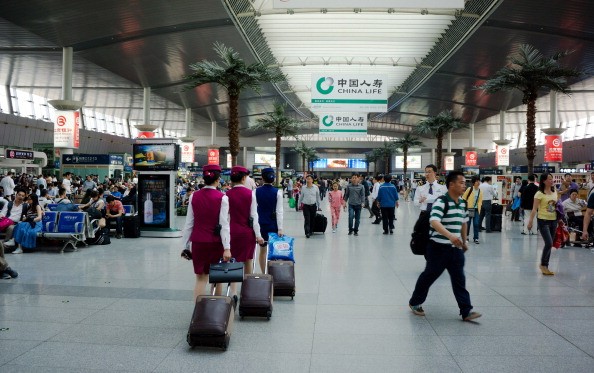China's top economic planner is set to implement plans for the integrated development of Beijing, Hebei and Tianjin provinces, as part of a national strategy to create the next growth engine through a global city cluster, which is expected to push growth in the capital region and in the whole Bohai Bay area in the next decades.
"The significance of the Beijing, Tianjin and Hebei synergetic development and integration strategy lies in the fact that it is not only enhancing the growth efficiency and effectiveness of related cities, but also driving the capital region into becoming a world-class city cluster and further boosting the entire Bohai Bay area of North China," Xu Shaoshi, head of the National Development and Reform Commission, said in an interview with China Daily on Sunday, Feb. 19.
Xu said that compared with major cities in the Yangtze River Delta, the Beijing-Tianjin-Hebei area is more densely populated and its growth is dependent on the balanced use of its limited space, economic growth and cooperation and integrated development.
The national strategy, which was initiated by Chinese President Xi Jinping in 2014, calls for the integrated development of the area.
According to Xu, significant development has been made in the area after three years and more innovation-driven projects and industry upgrades are being readied.
The report said that several integrated projects will be made this year outside Beijing, which includes the relocation of the Beijing municipal government into the administrative subcenter outside of the city.
The projects also include the new Beijing Daxing International Airport, the second phase of the Shougang Jingtang steel complex at Caofeidian, and several projects for environmental protection and traffic management.
Xu said that cross-border investment and financing, equity transactions and entrepreneurship within the region will be encouraged through unified rules and regulations as the Tianjin Pilot Free Trade Zone and Beijing Zhongguancun Science Park will play a more proactive role.
Shen Lei, an official with Tianjin Dongjiang Free Trade Port Zone, said that Tianjin will help enterprises from Beijing and Hebei to export goods through the free trade zone and port facilities.
Investment from Beijing
Beijing, on the other hand, will help Tianjin and Hebei to upgrade their manufacturing ability and improve on their innovation efforts.
"Thanks to abundant talent and research and development advantages, Beijing will fuel joint development of the whole region. We encourage companies to invest in Hebei and Tianjin, generating jobs and benefiting local residents," Beijing Mayor Cai Qi was quoted as saying.
Last year, Beijing's investment in Hebei and Tianjin rose up rapidly, with investments from Beijing enterprises reaching about 114 yuan ($16.6 billion) in Hebei and 90 billion yuan in Tianjin, up by 100 percent and 26 percent, respectively, year-on-year. Beijing's investment in the high-tech sector in Hebei and Tianjin also reached 15.4 billion yuan last year, up 38.7 percent year-on-year.
The largest integrated industrial project in the region is the Cangzhou Hyundai plant in Hebei Province, which has a total investment of 7.4 billion yuan. It opened in October and produced more than 3,000 jobs. The plant is seen to create a large auto industrial chain in Hebei that is worth 100 billion yuan.
Wang Haichen, an official with the Beijing Development and Reform Commission, said that Beijing is modifying its economic structure in preparation for its shift from manufacturing to high-end industries.
Wang added that the integration strategy has improved the business environment in the region, which is expected to attract more foreign direct investment.
Recent statistics show that more than 10 percent of the country's GDP in 2016 was contributed by the total GDP of Beijing, Tianjin and Hebei that reached 7.46 trillion yuan.
Regional development in the country is led by the Yangtze River Delta, with Shanghai as the leading engine. Last year, its GDP reached 17.9 trillion yuan, nearly 24 percent of the country's total GDP.




























